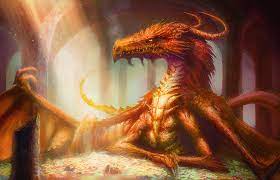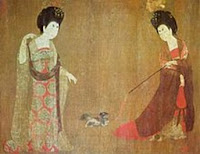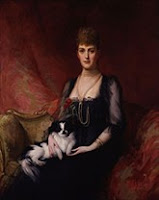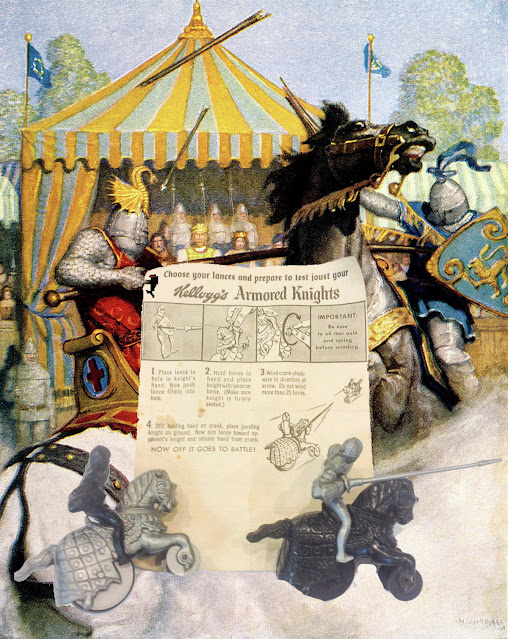Yellowstone: A New Era of Westerns
by Elizabeth Clements
Whether you hate it or love it, there is no denying the tv series, Yellowstone, has had a huge impact on viewers and on television. This writer hopes Taylor Sheridan’s inspired writing and directing of the series will instill understanding and revive interest in making more great western movies. Surely Hollywood is watching and producers and writers are compelled to make more movies of this genre that are loved by millions of people all over the world. Yes, lots of horses and cows are needed, but these days of camera magic, it’s still possible to make realistic scenes without breaking the budget (think Aquaman) [grin].
One (of many things) things I appreciate about Yellowstone is it has brought people together on Facebook—talking, sharing opinions or agreeing to disagree, sharing movie clips and photographs and snippets of the stars of the show. It has distracted people (for a while) from the devastating and lingering effects of Covid and many being shut off from their normal activities. Switching off the news and chatting with on-line friends and strangers helps compensate from the void of not being able to visit with family and friends for far too long.
So, we’ve made on-line friends of strangers who we will never meet but who share a mutual interest: Kevin Costner, cowboys, horses, Montana, history, drama, love, violence, loyalty and the beautiful scenery of Montana and at times, Wyoming. Plus, I’ve discovered actors I’ve never seen before but am now a big fan of the Yellowstone family.
Then from Taylor Sheridan’s prolific pen we also have 1883 that shows the beginning of the Dutton dynasty, of people enduring hardships as they travel west in a wagon train. We know from watching Yellowstone, that Taylor doesn’t pull any punches, but shows life how it is, albeit, with a little of humor thrown in here and there to lighten the ever-unfolding drama. I haven’t watched 1883 yet, but I will. Through this series we learn even more history, and because of Taylor’s reputation of attention to facts and details, I think we can trust the history unfolding here. If the facts are presented truthfully, we learn much easier from watching a story than just doing the research ourselves.
Some people have commented on fan group forums that they’re offended by the language on Yellowstone. Yes, there are lots of f-bombs, etc., but swearing is so prevalent in action/adventure movies nowadays that it’s little wonder you encounter it now while walking down a street or in a pub. Blame it on the movie makers back in the late 60s/early 70s who wanted to make more realistic movies that reflect life. Bonnie and Clyde was pretty realistic with all those bullets raining into their car, compared to movies decades earlier that avoided close-ups of murder. To this day I’ve never forgotten the shock when naïve li’l ole me watched Clockwork Orange back in the late 60s. I’d been a moviegoer since childhood, but the only person who ever swore in any of the movies I went to was Rhett Butler saying to Scarlett, “Frankly, my dear, I don’t give a damn.” I’m sure that epithet careened around the world just like the shot that killed (?) JR in Dallas years later. [grin]
What makes Yellowstone so special for so many fans is the drama, the fight between good and evil, things we understand in our daily lives. We feel secure watching it from the safety of our recliners, but the issues are very real and familiar. We see loyalty of family, we see a dysfunctional family, we see evil and greed in many forms, yet can you blame a man for wanting to hold onto what he and his forefathers worked so hard for? We can relate that to our own lives, wanting to hang onto our home during hard times. Just some of us aren’t that brave or strong or smart as Beth Dutton. We see her pain and her faults but we cannot fault her loyalty. We cheer for her as she finds love with her soul mate, who needs her love and acceptance as much as Beth needs Rip’s. And thus we also cheer for Rip, despite what he’s done in his life. It begs the question: what if this were me? Would I have the courage of my loyalty, my beliefs?
Yes, there is violence in Yellowstone, but there’s violence all around us and we easily find it, even accidentally, when we turn on YouTube. If you don’t like something, just click to something else. Believe me, when I want to escape, I watch a lot of cats and dogs and children videos, or the plethora of music videos that help me escape for a few minutes…or an hour or two.
And when I get tired or bored with what’s on tv, I can turn to my DVD library for a couple of hours of escapism. Will it be a musical, a comedy, a legal thriller, or a western? Some movies we’ve watched so many times we could have been stand-ins for the actors. [grin]
Since there are thousands of westerns made stemming back to the silent movies, I’m going to touch on the ones that have had a lasting impression on me. There are lots of westerns that are shoot-‘em-up action. Gunfights and posse pursuits are expected, just like car chase scenes are mandatory in the action-adventure movies.
What I’m concentrating on here are the westerns that speak to the heart and give us a glimpse of what makes our western hero and heroine tick. We writers are guilty, to a certain extent, of romanticizing westerns and that’s understandable because life in the west was hard, sweaty and dirty, with few amenities and mostly grinding work. To appeal to our finer sensitivities, our hero and heroine must be reasonably clean and side on honorable, with good overpowering evil. I admit I’m not good at making my villains utterly evil, nor can I put my hero through too much torture, because I am, after all, a western romance writer, but I admire the writers who can accomplish both.
Despite being hooked on Yellowstone, my all-time favorite western is Dances With Wolves—and not just because of the fabulous scenery when Lieutenant John Dunbar rides over a ridge and sees the majesty of the western frontier spread out before him. That scenery reminds me of the beauty of the Cypress Hills only a 45-minute drive from where I live and where my western trilogy is set. I can see them as a smudge on the horizon when I am on a hill here in town.
It’s no little coincidence that Kevin Costner should be involved in Yellowstone, because it reflects who he is and what he believes in, just like Lt. Dunbar or John Dutton. The message in this movie hit me between the eyes. Finally, Hollywood got it right, thanks to an excellent novel written by Michael Blake and Kevin Costner’s vision in directing and acting. For once the Native Americans were portrayed in a true light: not as murdering savages, but instead, a normal, peace-loving people who preferred a peaceful family life. There was humor and laughter, wisdom and acceptance. Yes, there were rogues, too, as there are in all races, but it particularly pointed out the ignorance and injustice prevalent in the settling of the West. Even though they sought freedom and a (better) life by going into the frontier, the settlers also brought their emotional baggage with them. That’s why I’ve often said civilization doesn’t change, only the window-dressing changes.
Oh how I despised the actions of those soldiers when they reached Dunbar’s deserted outpost. And did they really have to kill Two Socks for sport? One tiny little camera shot focused on an empty tin can of beans carelessly tossed onto the prairie by the pedlar. The only other things littering the prairie were the sun-bleached skulls of cows or buffalo or some other wild animal. (What will future generations think of our overflowing landfills?)
Another Costner movie I love nearly as much as DWS is Open Range. Yes, this movie has the usual greedy, bigoted scoundrel and a noisy shoot-out climatic ending, but what I love is the characterization of two cowhands (Costner and Robert Duval) on a cattle drive and a glimpse into the heart of a trail-hardened cowboy. One scene shows how Costner’s character is aware he’d tramped mud onto the heroine’s carpet and tries to scoop most of it up and brush it under the carpet. In a later scene he accidentally breaks her china tea service and leaves money with the store merchant to order a replacement.
Lonesome Dove, written by Larry McMurtry, starring Robert Duval and Tommy Lee Jones, is a fantastic movie and mini-series. It gives a gritty view of life in a small dusty Texas hamlet and the mundane, unglamorous life on a long cattle drive with coffee and beans being the main staple for energy. The most succinct word to describe the landscape and the clothing is: beige. Everything is coated in dusty, boring beige. Even the clothes are beige. It also shows that special bond between a man and a woman down on her luck, as well as two old friends and promises kept (and was actually inspired by a true story of two Texans, Charles Goodnight and Oliver Loving who took several thousand cattle north on a 900-mile cattle drive from Texas to Montana).
John Wayne starred in some great westerns. My favorite is classic McLintock. We’ve watched it so many times we know key passages, let alone know what happens next. This movie has everything, big rancher, big money, great chemistry between JW and Maureen O’Hara, and lots of humor. It also shows good relations between the rancher and Native Americans and how people want, and need to be, treated. Are my threads starting to weave a ball of familiarity of the western human spirit?
I enjoy Rio Bravo for so many reasons, but one scene makes this movie stand out from many other westerns. It’s the jailhouse scene where Dean Martin lies on a cot and croons My Rifle, My Pony and Me, accompanied by Ricky Nelson strumming his guitar. And loveable Walter Brennan, with his famous toothless cackle, joining in with his harmonica. Not something one would expect in the middle of a western, but unforgettably entertaining, especially when juxtaposed between Martin’s hopeless alcohol addiction and hired thugs terrorizing the town.
The Big Country with Gregory Peck is another favorite western that encompasses all the earmarks of a good-against-greed western movie. The actor is perfect in the role and oh my, the scenery leaves one breathless, just like in Yellowstone.
Three days before I saw the movie in the theater, I read the The Horse Whisperer, a debut novel by English novelist, Nicholas Evans. My biggest anticipation was how would Hollywood create the scene where the horse rose up to fight off the semi. I wasn’t disappointed. In fact the entire movie followed the book closely until the last quarter of the movie. Then it changed the romantic story line, which annoyed and disappointed me because it’s such a great movie with amazing scenery, filmed in Montana. Still, I have watched it several times and not just because Robert Redford plays an amazing part.
“According to writer Nicholas Evans, Tom Booker is modelled after horse whisperers Tom Dorrance, Ray Hunt and, in particular, their younger disciple Buck Brannaman. Evans has said, "Others have claimed to be the inspiration for Tom Booker in The Horse Whisperer. The one who truly inspired me was Buck Brannaman. His skill, understanding and his gentle, loving heart have parted the clouds for countless troubled creatures. Buck is the Zen master of the horse world."
Tom Selleck and Sam Elliot are my favorite western actors and quite often are my go-to movies when I want enjoyable entertainment (and satisfying eye candy). Thus, for me, I’ve kinda saved the best for last. Not everyone may agree with me, but then we can politely agree to disagree, eh? Both actors have a terrific portfolio of great movies and a theme is quite prevalent in them all: good, honest, decent western men with great human qualities of knowing what is right and acting upon it.
Conagher is a winner on so many levels and is my favorite of Sam’s 70+ movies. It’s a moving story revealing the hardship and loneliness of a widow’s life on the prairie and the heart of a weary saddle tramp who is moved by slips of poetry attached to tumbleweed that he finds on the prairie.
Sam has teamed up with Tom Selleck in many westerns and with their big stature and amazing moustache, perfectly play bigger-than-life heroes. We have watched The Sackets so many times we can lip sync many of the lines and know the scenes. As in The Sackets, the two actors teamed up again with Jeff Osterhage to play three brothers at the end of the Civil War in The Shadow Riders, another great Louis L’Amour story.
Although I love both actors, for me Tom Selleck is number one ever since I first saw him in Magnum P.I. back in the mid-70s. (On principle, I cannot and will not watch the unnecessary remake of the tv series.) Tom has made so many great movies from contemporary comedies to westerns and everything in between. I’m impatiently waiting for Blue Bloods to resume. The theme in all of them have a common link: good overcoming evil: Crossfire Trail, Quigley Down Under, The Sacketts, Last Stand at Sable River. And although it's not a western, I love the wonderful romantic High Road To China, set in the 1920s era. Fantastic scenery and such a beautiful score weaving in and out of the scenes, especially when the actors are “flying”.
In my humble opinion, Monte Walsh is one of the best movies to watch to understand the life of a cowboy who has his entire life possessions rolled up behind his saddle. Tom is the star, but there’s a wonderful supporting cast. It doesn’t have the cussing prevalent in Yellowstone, but both movies realistically show the life of a cowboy/ranch hand, with some brilliants bits of humor. I highly recommend this movie for your DVD library.
Parts of this blog about my favorite western movies were taken from a blog I wrote a couple of years ago. I use them solely to complement the genius of Taylor Sheridan, a prolific writer and director before Yellowstone and 1883 exploded on our tv screens.
What is/are your favorite western movies? Where does Yellowstone fit into your viewing pleasure? Filming of Season 5 should begin in May with a release date in the late fall, I’d love to hear your take on Yellowstone and if will stimulate a comeback for great westerns.
Excerpt: Beneath A Horse-Thief Moon
The Red Fox couldn't be Sara. Surely, she wouldn't be that brazen, that stupid to flaunt her red hair. There had to be an explanation. Yet the bartender's words remained.
Sara was on the range the night cattle were rustled. Living here for twenty-four years she'd know the range like the inside of her cabin. Too many fingers all pointed in Sara's direction. And then there was the matter of her damned red hair.
Not wanting to believe the Red Fox could be Sara, Chase simply refused to, slowed Blaze to a canter and then a trot to give himself time to think. The cowhands' conversation he'd overheard in the coulee came back to him. Was Sara a victim…or a criminal?
It was late by the time he descended the final coulee and the ranch buildings loomed in the starlight. At least Sara was home tonight, but with her penchant for lies he doubted he'd get the truth out of her concerning the nights she'd supposedly been rounding up cattle.
His dejected sigh slid into the darkness. Blaze's ears pricked and pointed back at the sound. Chase patted him on the neck. A horse really was a man's best friend. No lies, no secrets, just a little temperamental once in a while to keep a man on his toes. Now why couldn't a woman be more like a horse?
Music drifted on the night breeze. A campfire gave out a cheery glow as he rounded the giant cottonwood. Despite the late hour, several men clustered around the fire. A cowboy played “Oh, Susanna” on a mouth organ. Another waved for him to join them.
Chase didn't feel like going over, too heartsick to be much company. These were good men, neighbor willing to help neighbor. How would they feel if they found out Sara was the Red Fox?
“I'm turning in.” He nudged Blaze toward the barn. Fang appeared like a shadow from a stall and licked his hand. A good dog and horse were a man's best friends. He rubbed Fang behind his ears and the dog squirmed and panted in canine bliss.
Chase wished Sara was his best friend.
The thought slid in so quietly that his hands stilled in Fang's thick pelt. Yeah, once they'd been best friends, a long time ago.
Chase jerked to his feet, angry at himself for wasting time thinking of what-ifs. Sara was a liar and a cheat. And quite possibly a low-down thief. His anger turned to self-disgust as for a split second the memory of her body slipped past his guard and seared him with desire.
He unsaddled Blaze and rubbed him down while the horse munched oats. He heard something behind him. He looked over his shoulder. Sara stood in the doorway, a tin cup of steaming coffee in her hand.
A familiar feeling swept over him. Except this time he wouldn't let her bewitch him. He didn't return her smile.
Sara's teeth scored her bottom lip. “You were gone a long time. I didn't think you were coming back. Could you use some coffee?”
Chase buried the instant leap of pleasure at the thought of her waiting up for him, bringing him coffee. Unsmiling, he gazed at her, taking in every detail. There wasn't a speck of dust on her. Blue flannel shirts hid her breasts and hips. Baggy Levi's were tucked inside scuffed black boots. Her hair was out of sight under an old floppy brown felt hat.
And just that quick, despite everything he’d heard tonight, he wanted her.
Gritting his teeth, he concentrated on her hat. Here she kept her hair out of sight. So why didn't she do that when she was out stealing horses? Whoa. Don't condemn her without a trial. Yet looking at her, how could he think her capable of stealing? Because she lies. Someone who lies and cheats on her husband can't have much of a conscience.
Chase swore. Viciously.
Sara stopped. “Now what's wrong?”































